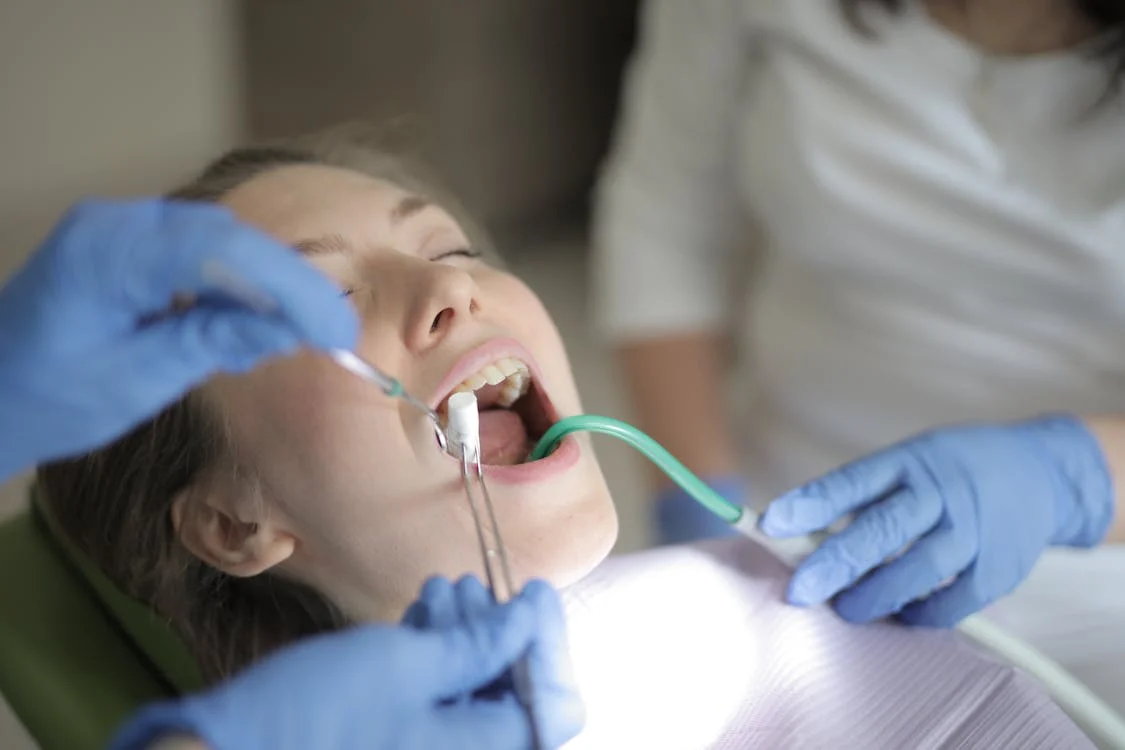Toothache, dental abscess, broken tooth, tartar, bad breath… There are many dental diseases and problems. They all require consulting a dentist for the most suitable dental care for your mouth. This post will tell you about the 5 most known dental care.
Summary
- Endodontics: the most practiced dental care
- Dental extraction
- Anesthesia before dental care
- Scaling
- Periodontal dental care
1. Endodontics: the most common dental treatment
Also called “root canal treatment”, “pulpectomy,” or “devitalization”, endodontics is one of the most common dental treatments performed in a dental office.
It is mandatory when an infection has spread to the canals following an untreated cavity. The pulp (the nerve) must be cleaned and disinfected in order to avoid a recurrence under a crown. This dental care consists of several steps:
The dentist removes the remaining tissue with manual or rotary files and injects chlorhexidine (diluted bleach).
He then seals the canals with heated gutta-percha (rubber) strips.
Endodontics is done under local anesthesia. It takes more or less time to perform depending on whether the dental care is for an incisor (1 canal), a premolar (2 canals) or a molar (3 canals).
2. Dental extraction
A dental extraction is the ultimate dental care that is never performed lightly by a dental surgeon. It is sometimes necessary when other solutions have failed.
These absences are compensated for by dental bridges, implants or removable dental appliances.
An extraction can be:
Simple when the coronal part of the tooth is accessible. The dental surgeon removes the tooth using a syndesmotic and an elevator, then “picks” the tooth with a forceps.
Surgical when the tooth is difficult to access. The dental surgeon has to fracture the bone tissue and sometimes cut the tooth and suture.
The aftermath of extraction is usually quite simple. The dental surgeon sometimes places a hemostatic square in the cavity to stop the bleeding and prescribes a painkiller to the patient to anticipate the awakening of the local anesthesia.
A cardiac patient will be systematically put on antibiotics before this dental care.
3. Anesthesia before dental care

Anesthesia can take several forms depending on the dental treatment performed:
Local anesthesia puts an area of 1 to 3 teeth to sleep.
Loco-regional anesthesia can numb up to half of the dental arch, for example, in the case of implant placement.
Contact anesthesia is a gel that is used to numb the gum or cheek before an injection.
Most anesthetic agents are available with or without adrenaline, which is not recommended for people with heart disease or high blood pressure.
Good to know: the effects of an anesthetic can last several hours, so be careful of lip or cheek bites!
4. Scaling
Scaling is the basic dental care commonly practiced in dental offices.
Tartar is mineralized dental plaque. It settles on the surface of the teeth or under the gums, which can cause gingivitis.
The dentist removes it with an ultrasound device.
5. Periodontal dental care
Sometimes, bacteria in the mouth cause inflammation of the gums, even “nibbling” the bone tissue. The tooth is no longer supported and becomes loose.
Many dental offices offer periodontal dental care, i.e. gum care. Curettages are performed in the dental chair, and the patient carries out disinfectant treatments at home using hydrogen peroxide and baking soda. This dental care is essential before installing dentures or implants, for example.
All in all, the dentist remains your best ally. Hope this post has provided you with the information you were looking for. Remember to jot down a few words in the comments below.


